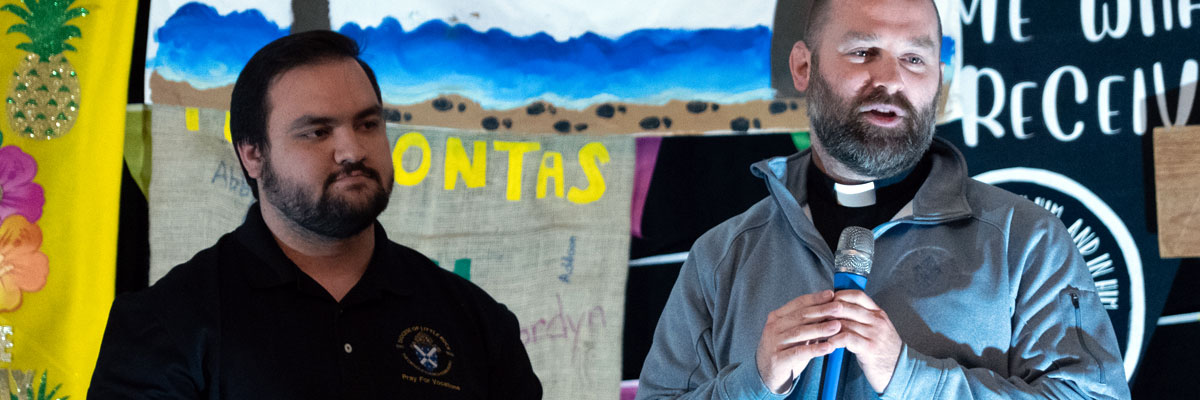Official Website of the
Catholic Diocese of Little Rock
Mystery of God to be explored through sacraments, Scripture, prayer
Published: February 3, 2007
By Msgr. Richard Oswald
In every celebration of the Eucharist, following the consecration of the bread and wine, the celebrant issues the invitation, “Let us proclaim the mystery of faith.” All sing out a profession of their faith in the mystery of Christ’s death and resurrection and his promise to return in glory. More than a memory and a promise, the Eucharist makes Christ’ sacrifice sacramentally present to us. We participate in the Paschal Mystery of Christ, his passage through death into eternal glory. The word mystery is one of the most important words in our theology and liturgical prayer. We do not use the word in the sense of a crime story ora ystery of science to be solved. Rather we use the word to describe a truth so deep that it can never be fully understood by our minds, a truth that demands our reverence and awe. This truth is constantly being revealed to us but will always exceed our ability to comprehend it. The fundamental mysteries of our faith are these: Our incomprehensible God has created us, given us freedom and is constantly revealing his lovefor us. The death and resurrection of Jesus is the fullest expression of God’s plan to communicate his love to us, to redeem us and share his life with us. God intends that we spend eternity in communion with him and will give us the ability to see him face to face in all his glory growing in our knowledge of him and our experience of his love yet always failing to fully comprehend him. The mystery of God is eternal. Here and now we experience the Paschal Mystery of Christ and the outpouring of God’s grace through our celebration of the sacraments, especially the Eucharist. In the fourth century, after the discovery of Christ’s holy sepulcher, Christians began making pilgrimages to the Holy Land to visit the tomb and other holy sites. There developed a fascination with celebrating the Eucharist at sites associated with particular Gospel passages. Eventually this practice led to an understanding of each event in the life of Christ as a grace-filled mystery. Later these events began to be celebrated within a formal annual schedule. Each celebration or feast brought the faithful into contact with a particular mystery. This gave birth to the Church’s liturgical calendar. During the Middle Ages reception of Communion became much less frequent but the hunger for the mystery of Christ endured. Believers found other ways to experience his saving actions. Prayerful meditation in which the Gospel events were spiritually recreated also enabled individuals to participate in the mysteries of Christ’s life. Beautiful paintings, sculptures and stained glass windows visually representing these mysteries served as doors to meditative prayer stirring the imagination as a path giving access to the mystery of God manifested in the life, death and resurrection of Christ. Praying the rosary is the most popular devotional prayer in the Roman Catholic Church. It is easy to see the connection between the rosary and the developments of the fourth century and the Middle Ages. God is greater than the knowledge that any of us can have of him and will always remain so. Yet he invites us to know him more each day. The sacraments, sacred Scripture and prayer are paths to the mystery of God. It remains for us to open ourselves to his transcendence. Msgr. Richard Oswald is pastor of Immaculate Conception Church in Fort Smith.









